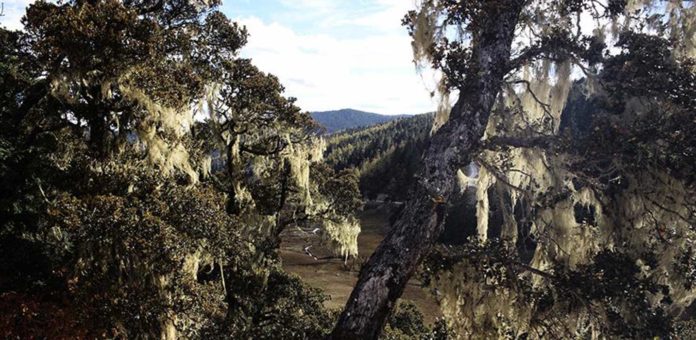Southern China was a hotspot for bat-borne coronaviruses. A new study suggests that global greenhouse gas emissions perhaps played a significant role in that.
A new study by the University of Cambridge‘s Department of Zoology suggests that climate change may have driven the emergence of SARS-CoV-2. The study revealed extensive differences in the type of vegetation in the southern Chinese Yunnan province, and adjacent regions in Myanmar and Laos, over the last century.
Climatic changes include increases in temperature, sunlight, and atmospheric carbon dioxide, affecting the growth of plants and trees – which have changed natural habitats from tropical shrubland to tropical savannah and deciduous woodland. This created a suitable environment for many bat species that predominantly live in forests.
The number of coronaviruses in an area is directly proportional to the number of different bat species present. According to scientists, an additional 40 bat species have moved into the southern Chinese Yunnan province in the past century, harboring around 100 more bat-borne coronavirus types. This ‘global hotspot’ is the region where genetic data suggests SARS-CoV-2 may have arisen.
Dr. Robert Beyer, a researcher in the University of Cambridge’s Department of Zoology and first author of the study, said, “Climate change over the last century has made the habitat in the southern Chinese Yunnan province suitable for more bat species. Understanding how the global distribution of bat species has shifted as a result of climate change may be an important step in reconstructing the origin of the COVID-19 outbreak.”
To get their outcomes, the scientists made a map of the world’s vegetation as it was a century ago. For this, they used records of temperature, precipitation, and cloud cover. They then used data on the vegetation requirements of the world’s bat species to work out each species’ global distribution in the early 1900s. Contrasting this with current circulations allowed them to perceive how to bat ‘species richness’ the number of various species. It has changed across the globe over the last century due to climate change.
Beyer said, “As climate change altered habitats, species left some areas and moved into others – taking their viruses with them. This not only altered the regions where viruses are present but most likely allowed for new interactions between animals and viruses, causing more harmful viruses to be transmitted or evolve.”
The region that scientists identified as a hotspot also homes to pangolins. Pangolins are also believed to be an intermediate host to SARS-CoV-2.
Most of the studies suggest that the virus is likely to have jumped from bats to these animals, sold at a wildlife market in Wuhan – where the initial human outbreak occurred.
Scientists remember the calls from previous studies to acknowledge the role of climate change in outbreaks of viral diseases and to address climate change as part of COVID-19 economic recovery programs.
Professor Andrea Manica in the University of Cambridge’s Department of Zoology said, “The COVID-19 pandemic has caused tremendous social and economic damage. Governments must seize the opportunity to reduce health risks from infectious diseases by taking decisive action to mitigate climate change.”
Professor Camilo Mora at the University of Hawai’i at Manoa, who initiated the project, said, “The fact that climate change can accelerate the transmission of wildlife pathogens to humans should be an urgent wake-up call to reduce global emissions.”
Scientists also highlight the need to limit the expansion of urban areas, farmland, and hunting grounds into natural habitats to reduce contact between humans and disease-carrying animals.
Journal Reference:
- Beyer, R.M. et al.: ‘Shifts in global bat diversity suggest a possible role of climate change in the emergence of SARS-CoV-1 and SARS-CoV-2.’ Science of the Total Environment, Feb 2021. DOI: 10.1016/j.scitotenv.2021.145413
